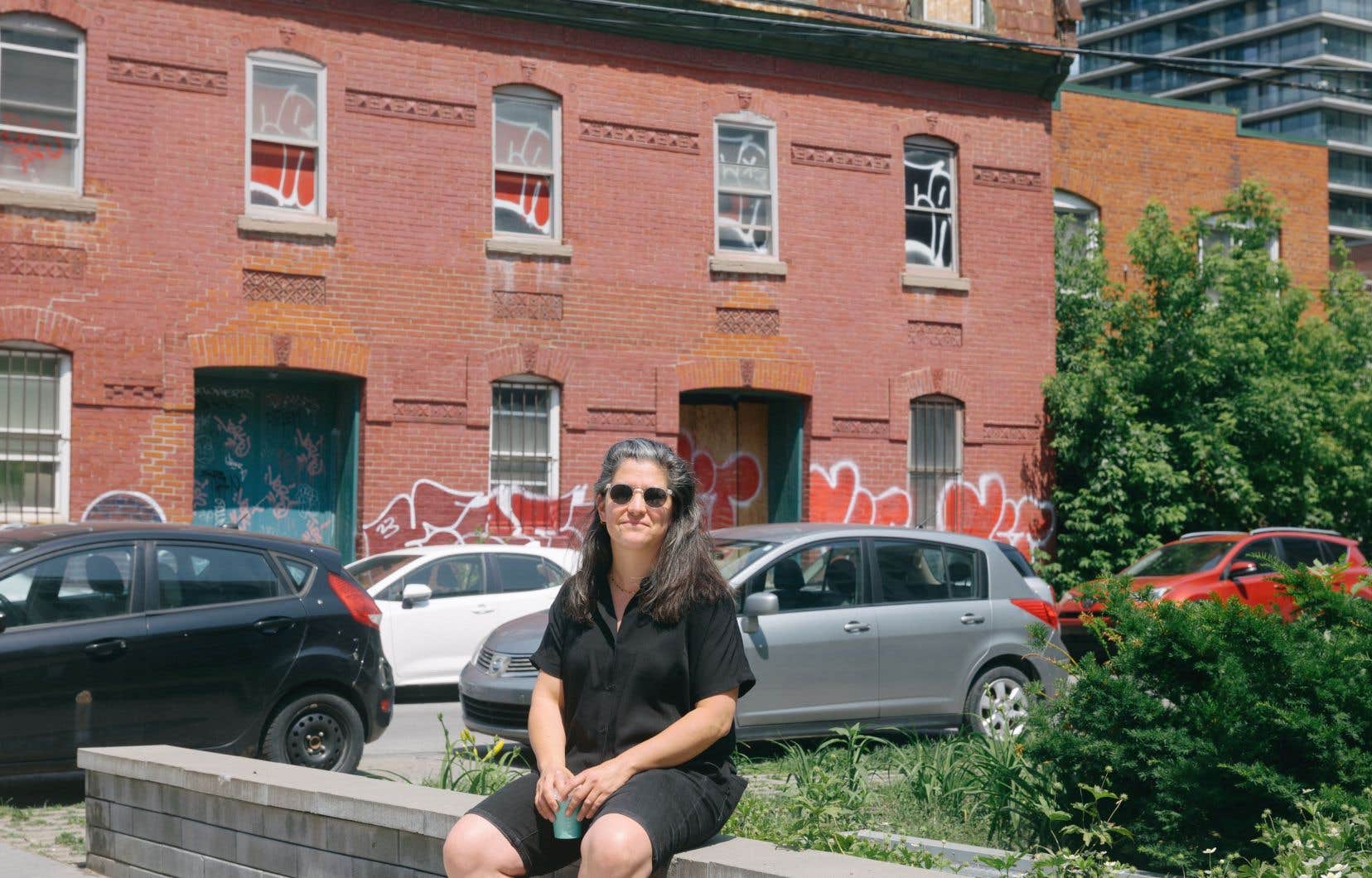The Griffintown district, long the home base of a large Irish working-class community, has been undergoing profound change for nearly ten years. On this hot June afternoon, while THE Duty there is a meeting with first-time novelist Chloë Rolland, the vast territory of 84 hectares — today delimited by the Bonaventure highway, Georges-Vanier Boulevard, Notre-Dame Street and the Lachine Canal — rumbles under the jackhammers which give rise to yet another new residential tower.
Chloë Rolland witnessed the beginnings of these great upheavals in the early 2010s, while she worked at the Old Port of Montreal. “I am very interested in what unites people and places. Griffintown seems to me to be a neighborhood with no other equivalent in the metropolis. We didn’t build on top of it until it was no longer accessible to ordinary people, as we were able to do with Plateau-Mont-Royal, for example. It was completely razed to the ground to build something international, unlike anything that existed before. By the same token, we have erased and abstracted a memory. Especially since people have deserted the neighborhood. Most did not fight to keep their homes and their memories. We built a place without history. »
With his first novel, It’s your carnage, Simonethe writer therefore wanted to restore part of this memory through fiction, by giving voice to four characters – Simone, Béatrice, Lola and Max – who see their residence and their business cornered by an eviction notice, and are forced to leave the places where they grew up or invested their lives and savings.
A complex genesis
Simone lives in an old building which houses a former boxing club in which she trains daily, spitting her anger at the sandbags. The hours of letting off steam are numbered, while its owner, Jackie, has just signed the sales papers for the building. One day, she receives a visit from Louis, a kid with whom she grew up and learned the basics of combat sports. Having become blind, Louis begs her to help him train, so that he can get back into the arena and subdue the opponents that his carnivorous father, former manager of the club recycled into mixed martial arts, puts in his path. .
After a few months, realizing that the business is doomed to failure and that Louis’ father will end up killing him, Simone refuses to continue the fighting. The same evening, Louis heads towards the barely frozen ice of the river, in the Old Port, and disappears into the waters.
A year later, Louis’ sister, Béatrice, receives mysterious messages from Simone, who promises to reveal the truth about her brother. Not fond of the idea of reconnecting with a family that she tried by all means to escape, Béatrice still wishes to clarify the situation by taking refuge, when her children are with their father, in a small hotel in Griffintown. There she meets the owners, Lola and Max, who welcome visitors in addition to managing a personal pharmacy. While the hotel will soon have to close its doors, the three new friends unite to confront Simone.
It was a news item that first put Chloë Rolland on the trail of her story. “In 2010, a man disappeared after falling onto the ice of the Old Port one winter evening. I wanted to imagine his fate. Afterwards, the idea of the hotel appeared to me. I then placed my story in the world of boxing, a sport that I practiced for a few years, and which explained why the character of Louis could want to put himself in danger. Since 2014, I have written at least seven different versions of the novel, which took a while to come together. »
The book, narrated by two voices, and which takes place over two distinct temporalities, is as complex as its genesis. This unconventional form reinforces the tension of the story, as the reader eagerly awaits a resolution that will only come at the junction of the two narratives.
“It was the story I wanted to tell that dictated the form. For Béatrice to look for her brother, Simone had to be involved at a different time. I made plans with dates. The editing work helped me a lot to refine the text, make everything coherent and ensure that each chapter informs the progression of the story. »
Two apocalypses
Another writing challenge consisted of giving voice to Simone, inhabiting and transposing this negative energy, which draws its source from anger, rage and revenge. “It was difficult because I don’t necessarily have that energy in me. But I understood that it was a way for her to regain control over her life. She chooses violence, because that is all she has known, but we always feel her torn by her need for tenderness, her impulse towards life. It’s certain that female characters who do that are rarer and more difficult to accept. But for her, there is a form of redemption in destruction,” specifies the author.
This slow rise towards Simone’s carnage reflects in the narration the apocalypse underway in Griffintown, whose facade and soul being demolished are in symbiosis with the state of mind of the characters. “We are more connected to places than we think. If the neighborhood hadn’t been destroyed, maybe Simone would have continued her little life, destroying her hands on her punching bag, but when the world around you changes, it often gives the necessary wake-up call. to an action. »
While a neighborhood disappears, taking with it the voices, experiences and stories of those who lived there, Chloë Rolland embraces this irresolution through her narration, leaving much of the fate of her characters in suspense. “I think it’s a lot like real life. Irresolution reminds us that everything starts from misunderstandings, from a lack of communication. Sometimes we prefer to stay in the fictions we tell ourselves rather than face the truth. » An individual tendency that is reflected in our collective stories.
